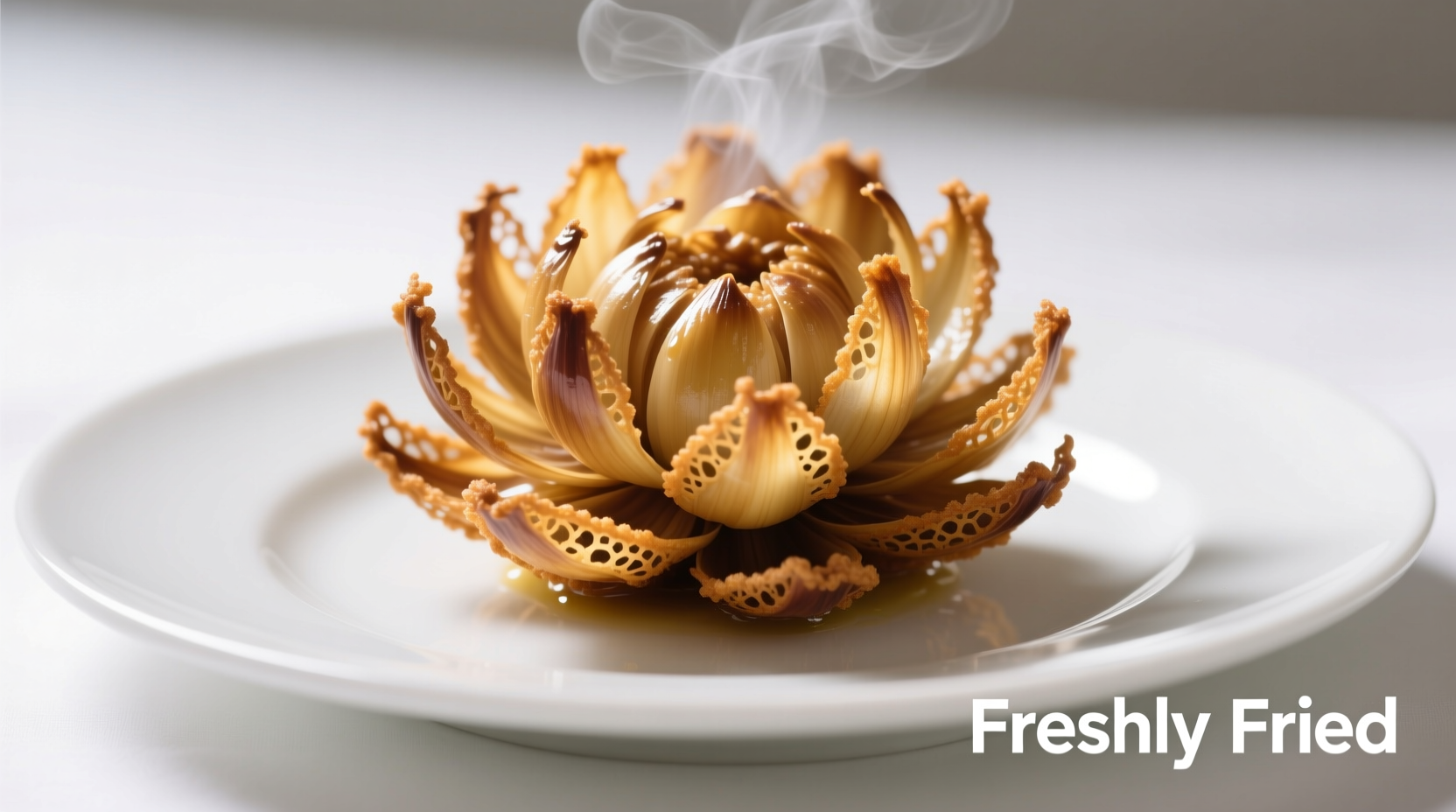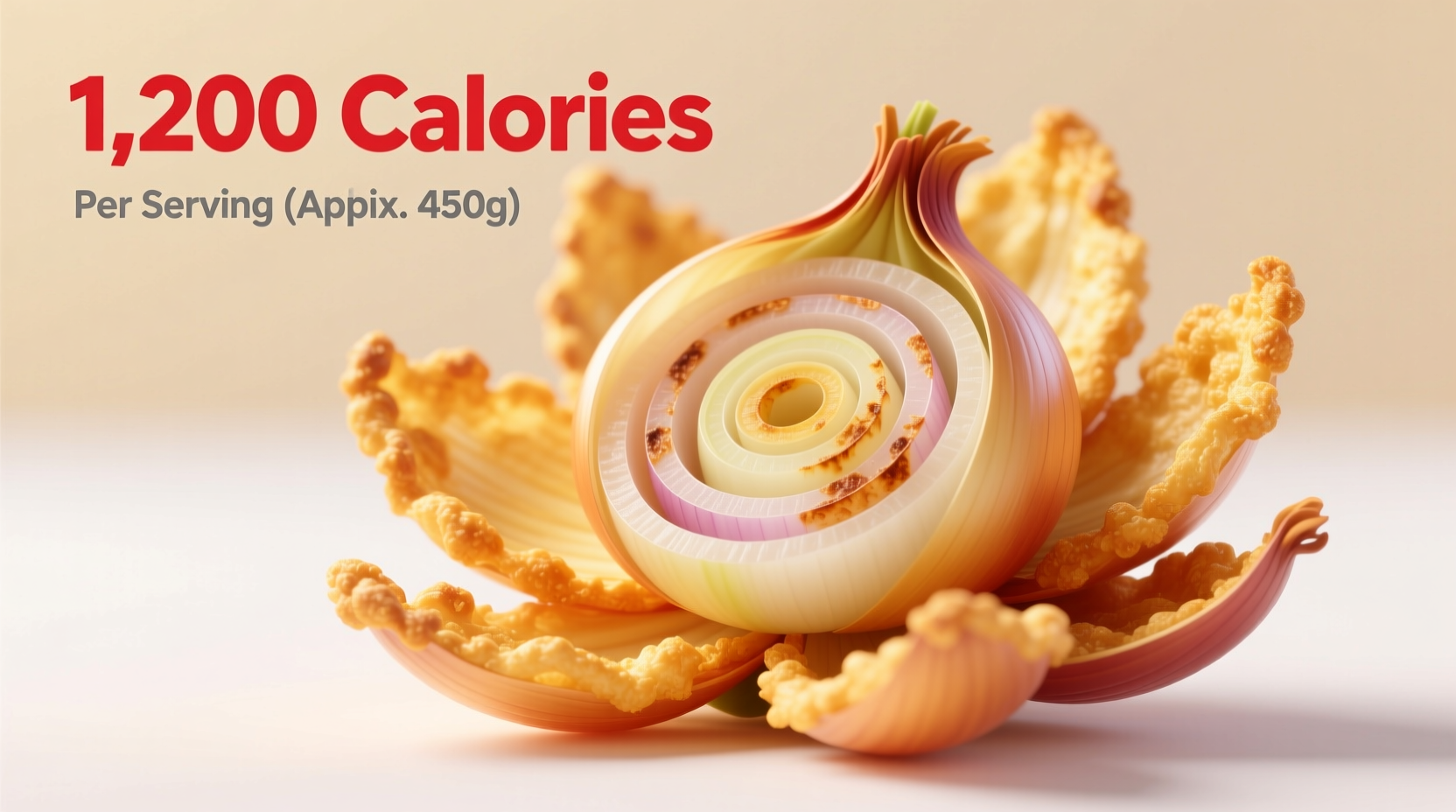When you're scanning the menu at your favorite steakhouse, that tempting blooming onion might seem like a harmless starter. But understanding blooming onion calories is crucial for making informed dietary choices. This deep-fried onion appetizer, famously popularized by restaurant chains, packs a significant caloric punch that often catches health-conscious diners by surprise.
What Exactly Is a Blooming Onion?
A blooming onion consists of a whole onion, typically a Vidalia or sweet yellow variety, cut to resemble flower petals, battered, and deep-fried. Served with a signature dipping sauce (usually a spicy mayonnaise-based sauce), it's become a staple appetizer at many American restaurants since the 1990s.
Breaking Down Blooming Onion Calories by Component
To understand why blooming onion nutrition facts vary so dramatically, let's examine what contributes to its calorie count:
- The onion itself: A large sweet onion contains about 60-80 calories
- The batter: Typically adds 200-300 calories
- Deep-frying oil absorption: Contributes 400-600 calories
- Dipping sauce: Adds another 100-150 calories
| Component | Calories | Primary Contributors |
|---|---|---|
| Raw onion | 60-80 | Natural sugars, fiber |
| Batter | 200-300 | Flour, eggs, seasonings |
| Frying oil absorbed | 400-600 | Vegetable oil, canola oil |
| Dipping sauce | 100-150 | Mayonnaise, spices, sugar |
Restaurant Blooming Onion Calories Compared
When researching blooming onion calories restaurant options, significant variations exist between establishments. According to verified nutritional data from major restaurant chains:
- Olive Garden: 1,040 calories for their signature Bloomin' Onion
- Outback Steakhouse: 800 calories for their original Bloomin' Onion
- Local restaurants: Often exceed 1,200 calories due to larger portions and oil absorption
These differences primarily stem from portion size, batter thickness, frying temperature control, and oil type used. Restaurants that double-fry their blooming onions typically have higher calorie counts due to increased oil absorption.

Homemade vs Restaurant Blooming Onion Calories
Creating blooming onion calories homemade versions offers significant calorie reduction opportunities. By controlling preparation methods, you can substantially lower the calorie count while maintaining great flavor:
- Air-fried version: Approximately 450-550 calories (50% reduction)
- Baked version: Around 500-600 calories
- Traditional deep-fried homemade: Still around 700-900 calories
The USDA FoodData Central database confirms that deep-fried vegetables absorb between 30-50% of their weight in oil during standard restaurant preparation, which explains the dramatic calorie increase from raw onion to finished product. [USDA FoodData Central]
Contextualizing Blooming Onion Nutrition Facts
Understanding blooming onion nutritional information requires context within your overall dietary needs. For an average adult following a 2,000-calorie diet:
- One restaurant blooming onion represents 40-55% of your daily calorie needs
- It provides 60-90% of the recommended daily fat intake
- The sodium content often exceeds 2,000mg (87% of daily limit)
This context helps explain why nutritionists often categorize blooming onions as occasional indulgences rather than regular menu items. The American Heart Association recommends limiting saturated fat to no more than 5-6% of total daily calories, which a single blooming onion can exceed.
Healthier Alternatives for Onion Lovers
If you're searching for lower calorie blooming onion alternatives, consider these options that maintain flavor while reducing caloric impact:
- Grilled onion halves: 150-200 calories with similar savory flavor
- Roasted onion wedges: 180-220 calories with caramelized sweetness
- Onion blossom with light batter: 500-600 calories using minimal batter and air frying
- Portion control: Sharing one blooming onion between two people makes it a more reasonable 400-550 calories per person
Practical Tips for Managing Blooming Onion Calories
When you decide to enjoy this popular appetizer, these strategies can help minimize the caloric impact:
- Ask for the dipping sauce on the side to control that 100-150 calorie addition
- Choose restaurants that use high-quality frying oils with better fat profiles
- Eat half and save the rest for later rather than consuming the entire portion
- Balance your meal by skipping other high-calorie items like fried sides or creamy dressings
- Consider it your main course rather than an appetizer to avoid overconsumption
Understanding Portion Distortion
One reason blooming onion portion size calories surprise so many people is portion distortion. What was originally designed as a shareable appetizer for 2-4 people has increasingly become marketed as a single-serving item. The Academy of Nutrition and Dietetics reports that restaurant portion sizes have increased by 200-500% since the 1980s, contributing significantly to unexpected calorie consumption. [Academy of Nutrition and Dietetics]
Final Thoughts on Blooming Onion Nutrition
While blooming onions aren't the healthiest menu choice, understanding their blooming onion calorie count empowers you to make informed decisions. Whether you're dining out or recreating this favorite at home, awareness of the nutritional profile helps you enjoy this tasty appetizer without sabotaging your dietary goals. The key is moderation, portion control, and balancing this indulgence with healthier choices throughout your day.











 浙公网安备
33010002000092号
浙公网安备
33010002000092号 浙B2-20120091-4
浙B2-20120091-4